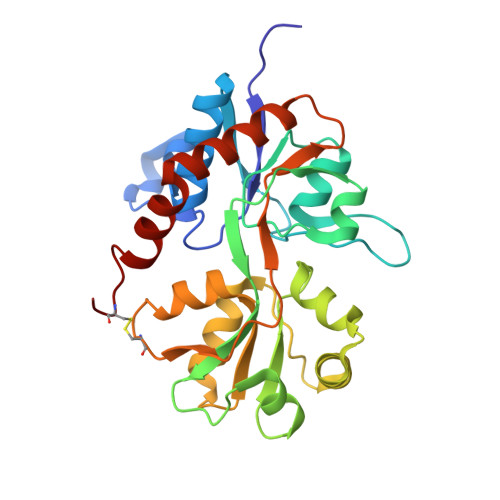Structural analysis of the positive AMPA receptor modulators CX516 and Me-CX516 in complex with the GluA2 ligand-binding domain
Krintel, C., Harpsoe, K., Zachariassen, L.G., Peters, D., Frydenvang, K., Pickering, D.S., Gajhede, M., Kastrup, J.S.(2013) Acta Crystallogr D Biol Crystallogr 69: 1645-1652
- PubMed: 23999288
- DOI: https://doi.org/10.1107/S0907444913011839
- Primary Citation of Related Structures:
4IY5, 4IY6 - PubMed Abstract:
Positive allosteric modulators of the ionotropic glutamate receptor A2 (GluA2) can serve as lead compounds for the development of cognitive enhancers. Several benzamide-type (S)-2-amino-3-(3-hydroxy-5-methyl-4-isoxazolyl)propionic acid (AMPA) receptor modulators such as aniracetam, CX516 and CX614 have been shown to inhibit the deactivation of AMPA receptors with a less pronounced effect on desensitization. Despite CX516 being an extensively investigated AMPA receptor modulator and one of the few clinically evaluated compounds, the binding mode of CX516 to AMPA receptors has not been reported. Here, the structures of a GluA2 ligand-binding domain mutant in complex with CX516 and the 3-methylpiperidine analogue of CX516 (Me-CX516) are reported. The structures show that the binding modes of CX516 and Me-CX516 are similar to those of aniracetam and CX614 and that there is limited space for substitution at the piperidine ring of CX516. The results therefore support that CX516, like aniracetam and CX614, modulates deactivation of AMPA receptors.
Organizational Affiliation:
Department of Drug Design and Pharmacology, Faculty of Health and Medical Sciences, University of Copenhagen, Universitetsparken 2, DK-2100 Copenhagen, Denmark.



















